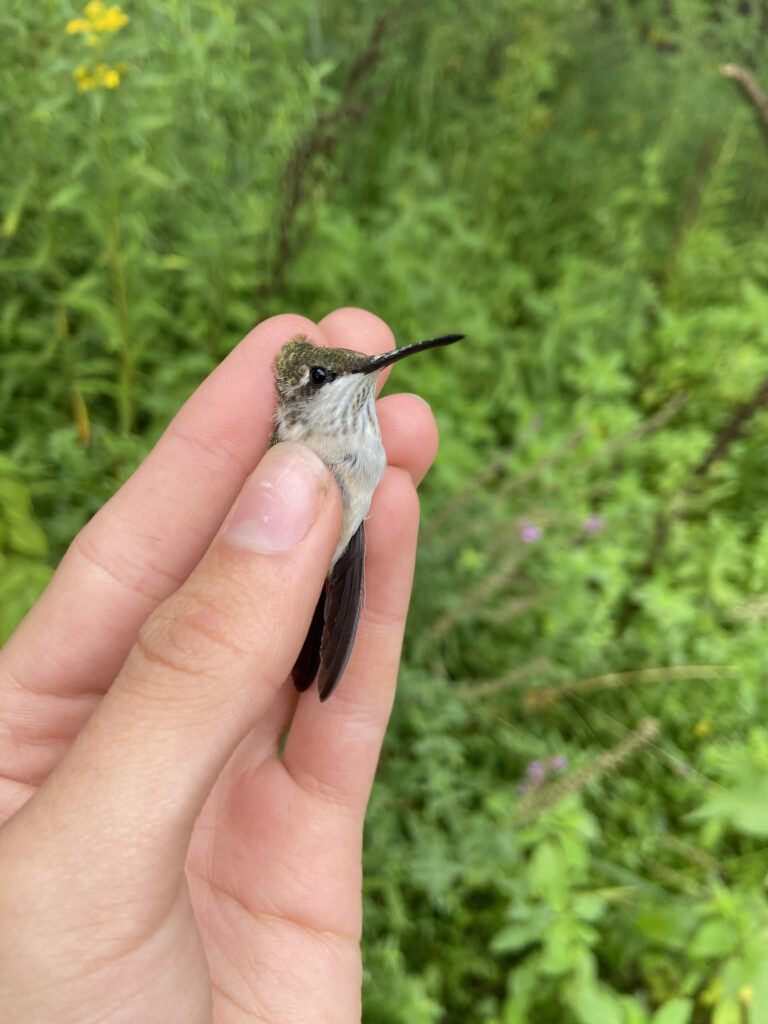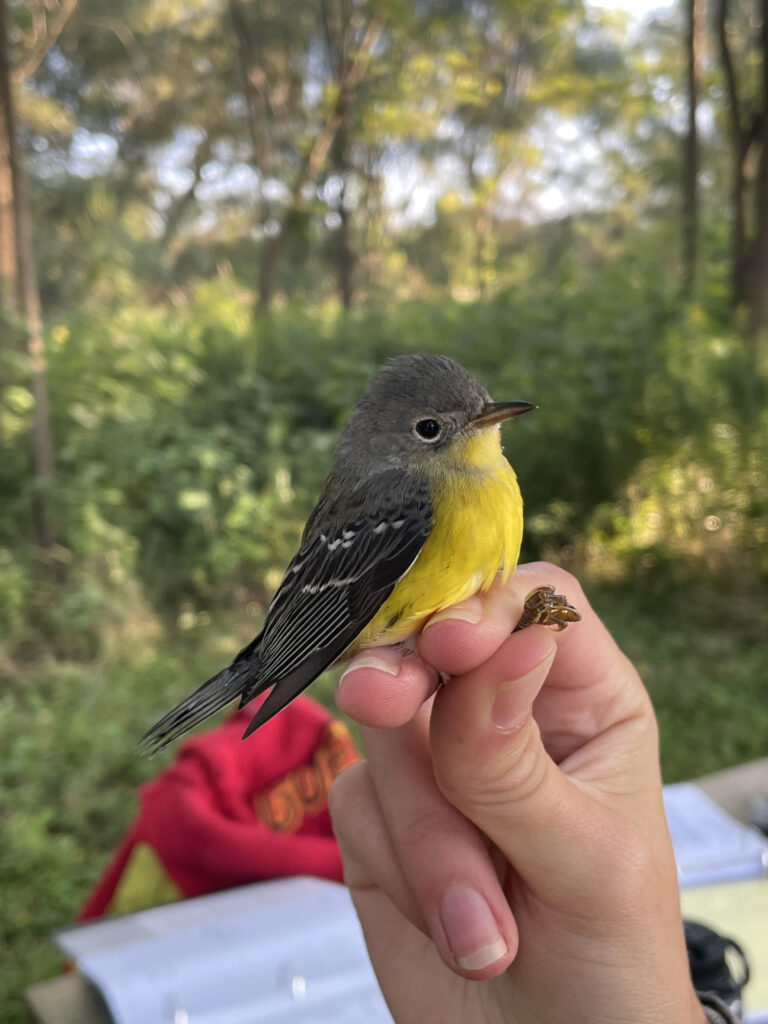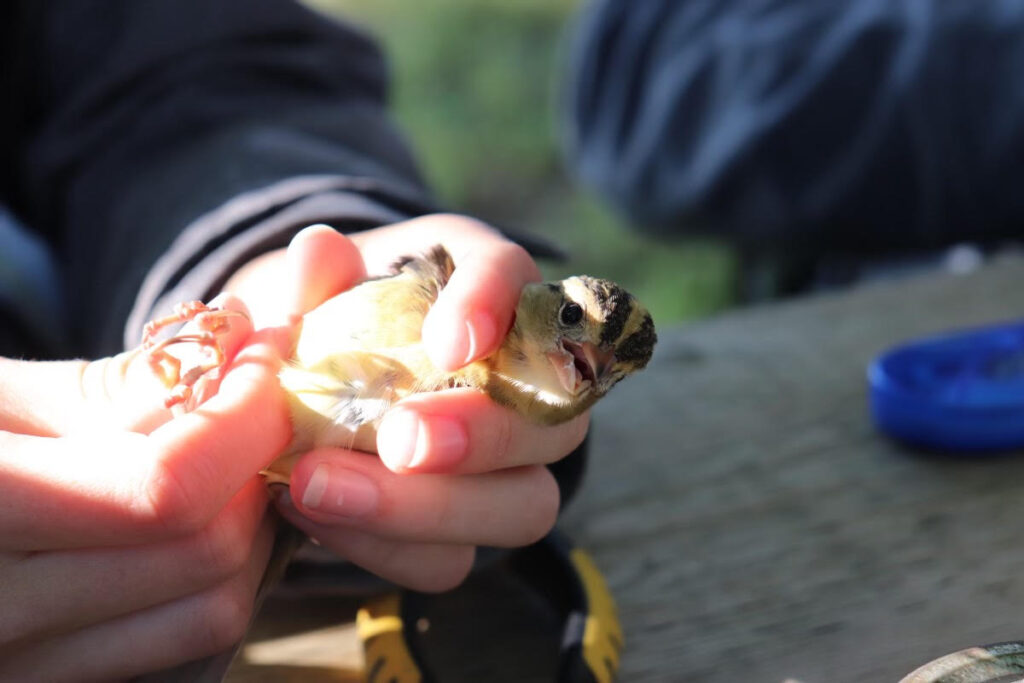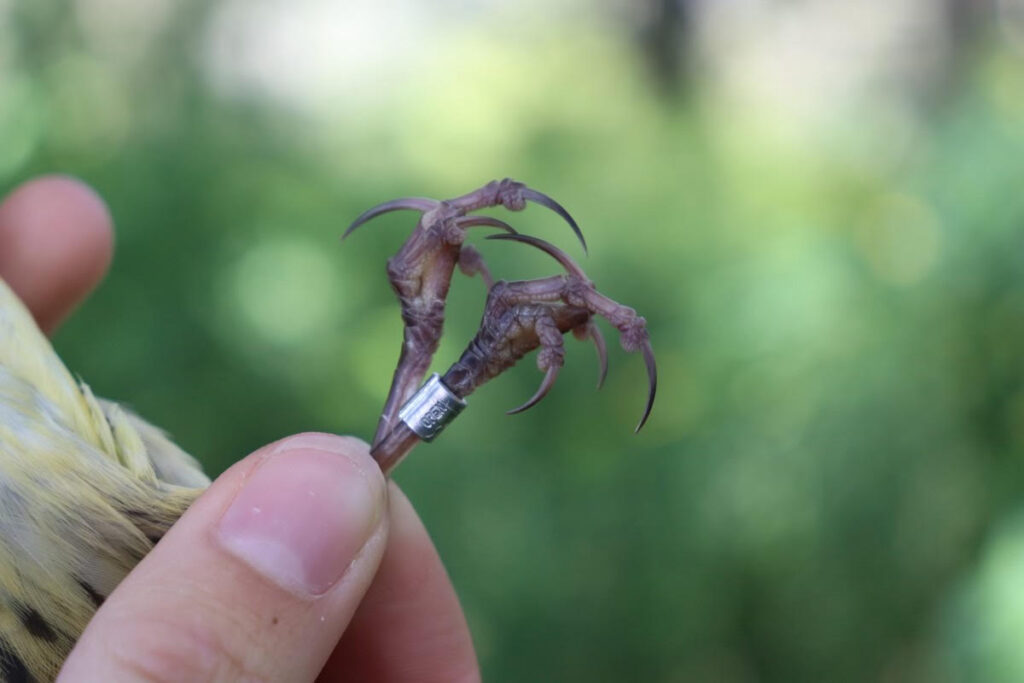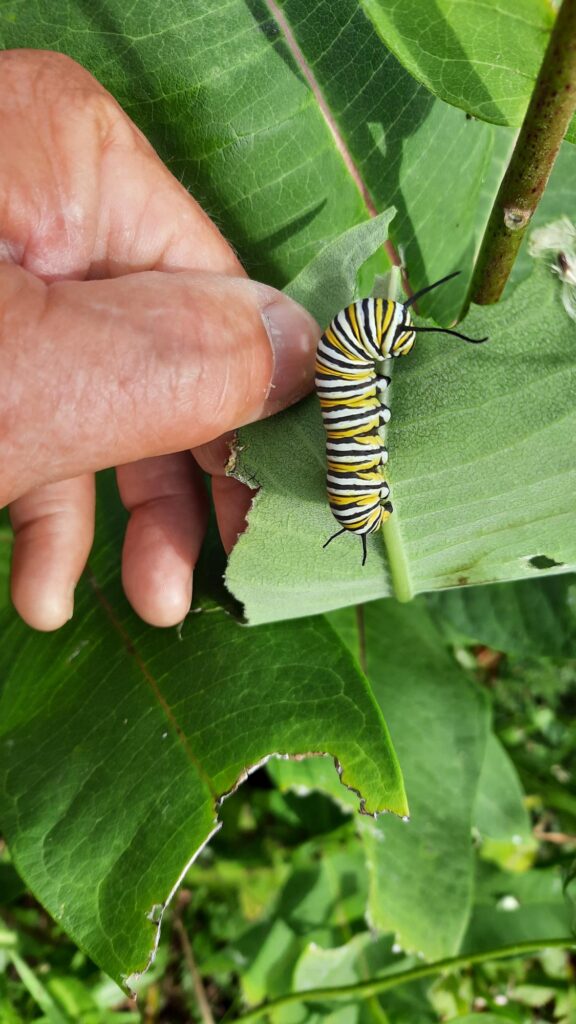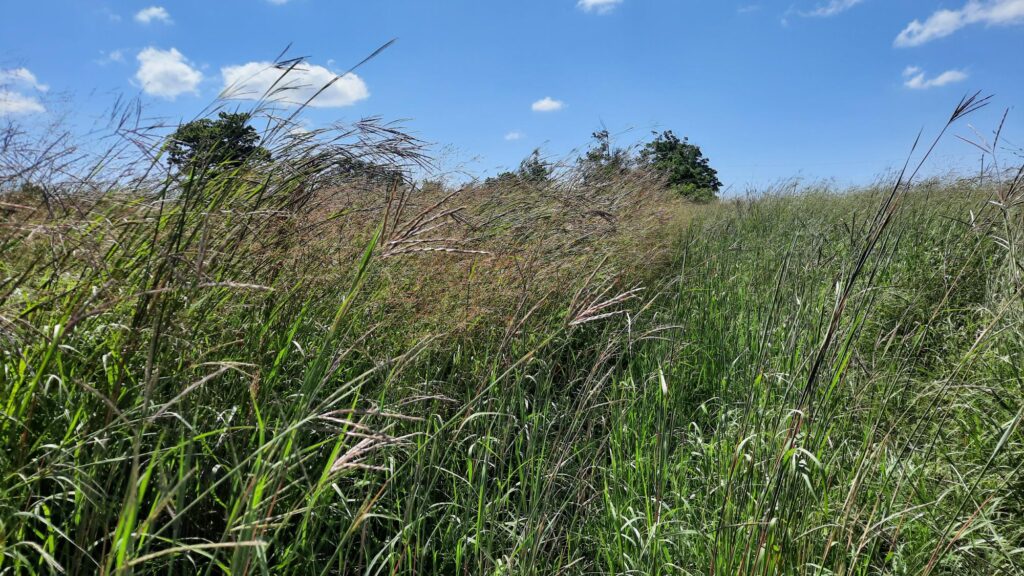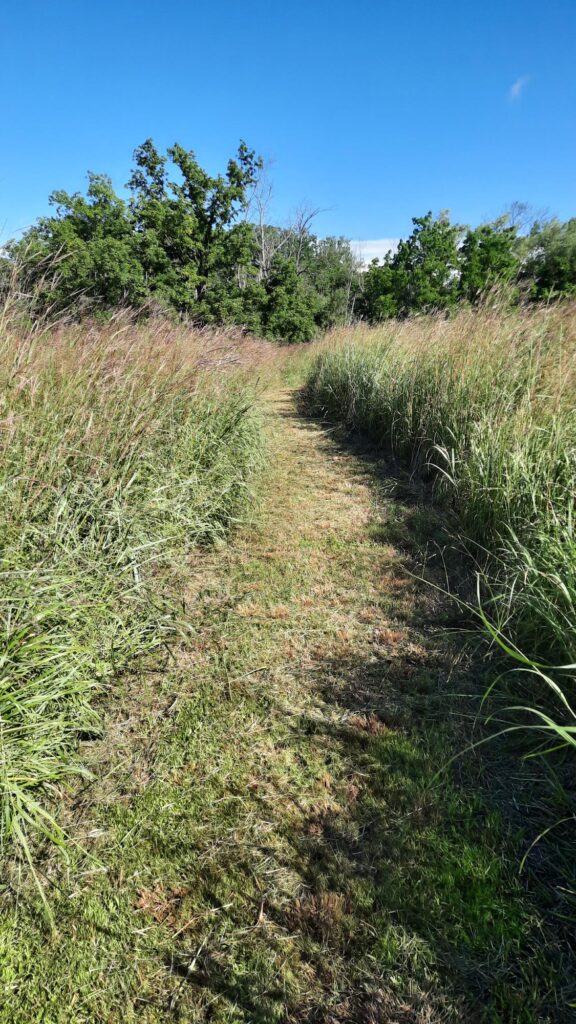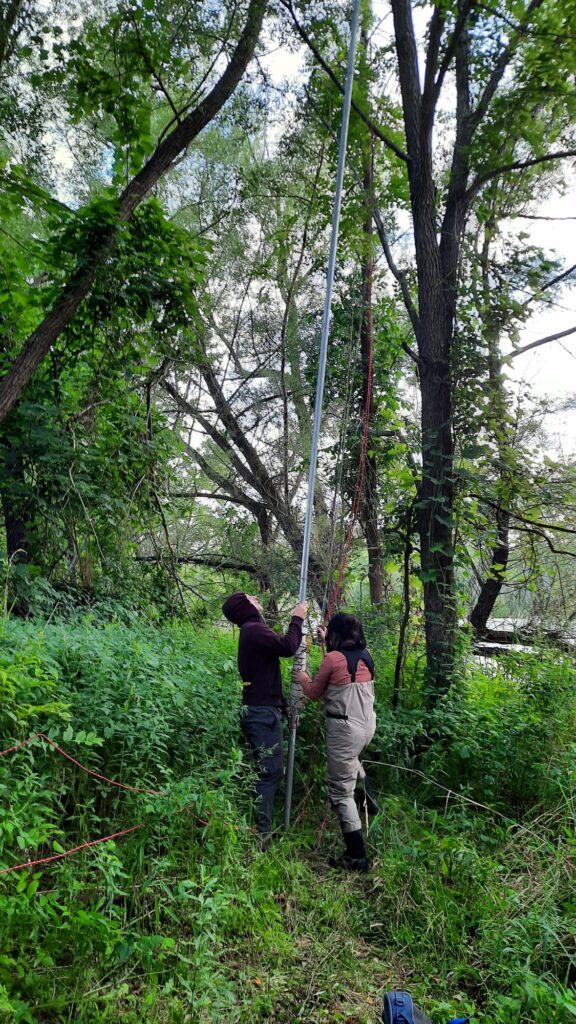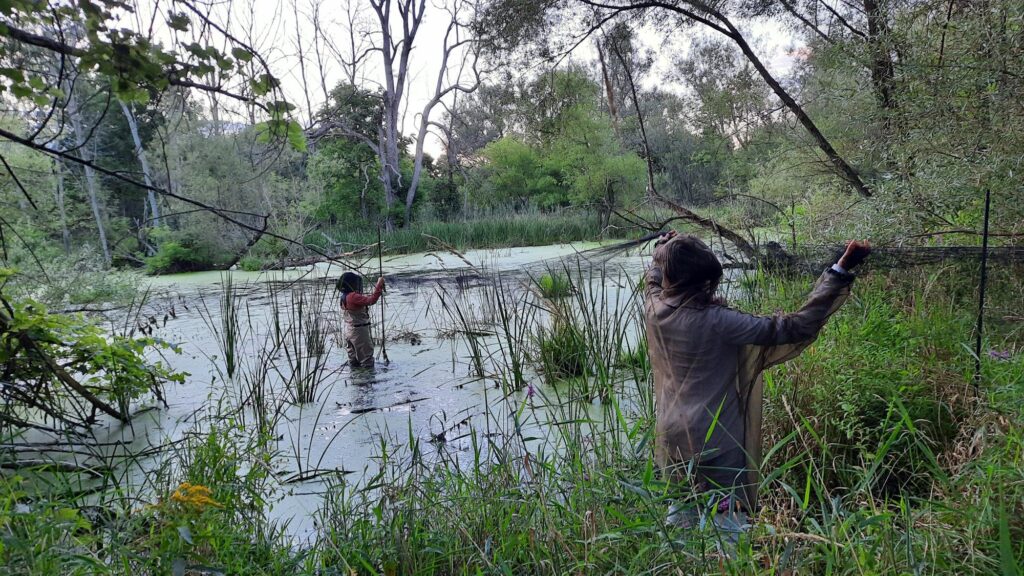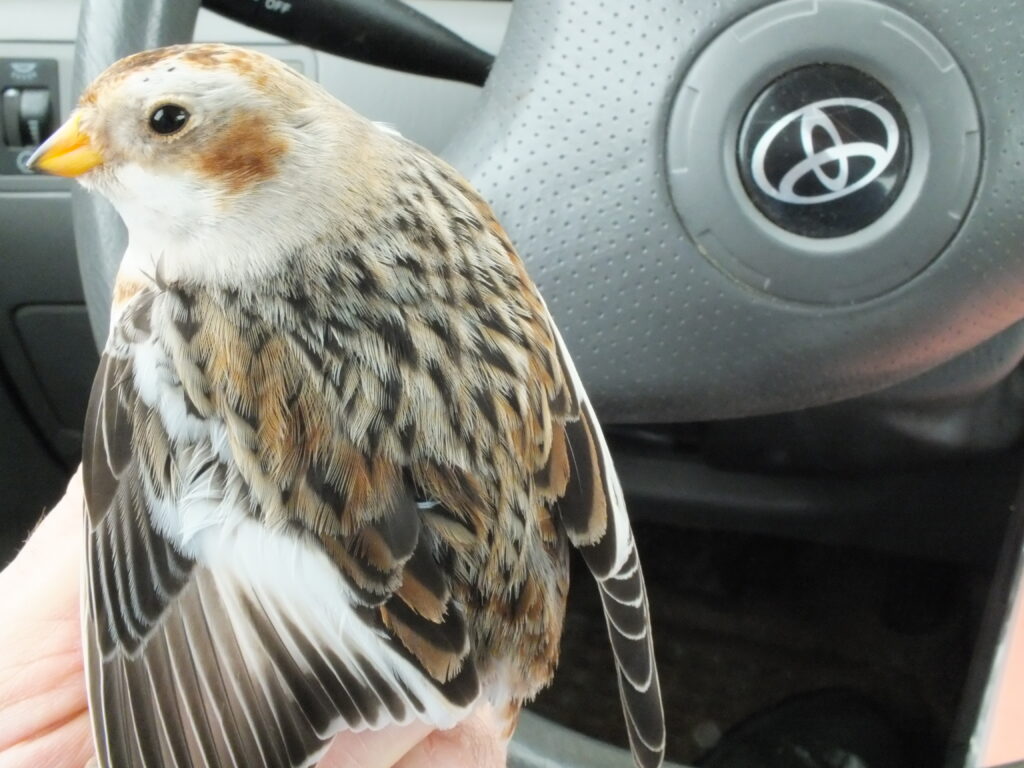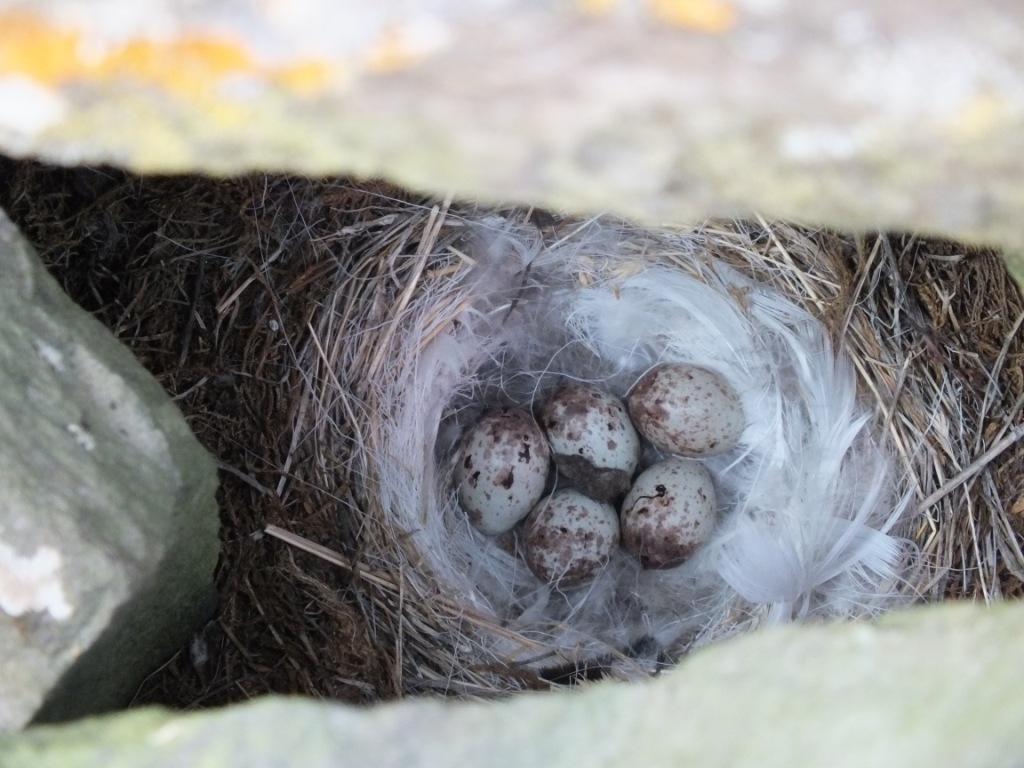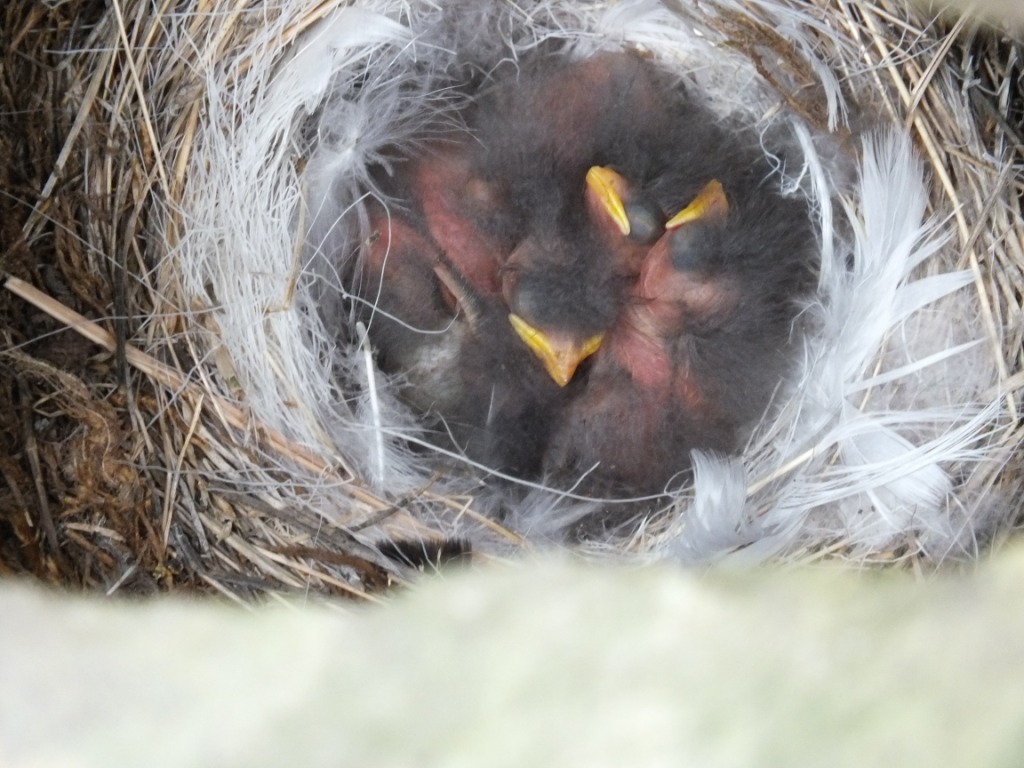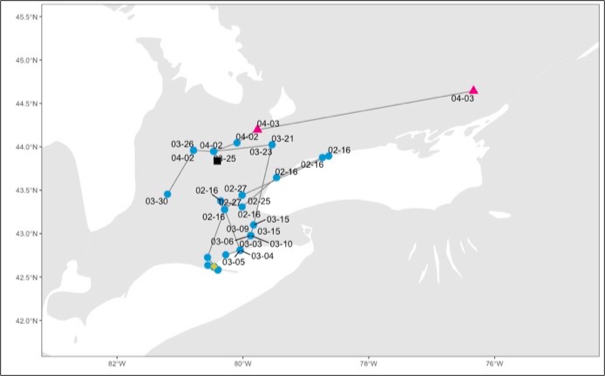August 19
On August 19th I set out early in the morning to start the first day of fall migration monitoring at Haldimand Bird Observatory’s Hurkman’s Farm. The morning was cool, hazy and cloudy but there were a few birds to be caught. Mostly local summer residents, but a few migrants at the end.
I noted at least 8 Bobolinks flying over, which gave me hope for my new project that I would be starting the next day to monitor Bobolinks as they migrate south, like some other banding stations have been starting to do.
Cathy from Haldimand Stewardship and George from the Niagara Bee Group visited mid-morning to meet and take a nutritional sample of the Prairie Grasses. They were both exceptionally pleased with the progress made and gave much praise to HBO for our dedicated work for conservation and education.
Banded 14:
2 Least Flycatcher
2 Black-capped Chickadee
2 House Wren
1 Song Sparrow
2 Swamp Sparrow
2 Common Yellowthroat
3 Indigo Bunting
Recaptured 7
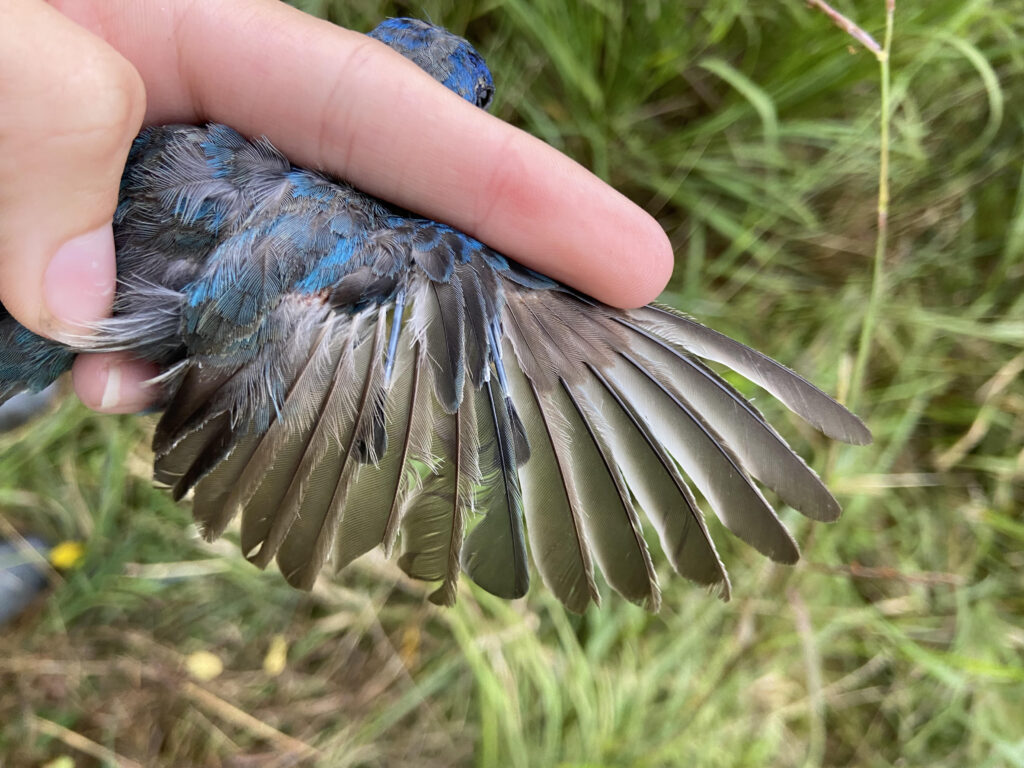
A second year male INBU in active ff moult. You can see at least three generations of feathers in this image.
August 20
On the 20th of August, the weather was much sunnier, although still chilly in the morning. The strong North winds the night prior pushed a handful of migrants onto the property, a few of which found their way into our nets. Early in the morning we opened the newly placed Bobolink net situated on the path through the prairie grasses, and started a playback that would continue through the morning. Almost instantly we saw a Bobolink fly in, so we quickly left the area with our hopes high of capture.
In terms of the migration nets, the morning was productive for both numbers and species. We were delighted to catch two migrant warbler species – a young Magnolia Warbler and a young Northern Waterthrush – as well as an adult Blue-gray Gnatcatcher, and five hatch-year Rose-breasted Grosbeaks all captured from the same net.
Just at dawn, we were delighted by droves of blackbirds leaving from their roosting area to the east of the property, and we estimated about 1000 of them, mostly Common Grackles. A pair of Sandhill Cranes gave us excellent views as the flew and called over the prairie field mid-morning. We observed 50 species the whole morning which is quite impressive for this time of year.
Back to the Bobolinks! We captured 10 in total for the morning and observed a total of 50, many of which were sitting around the net at the first net check. Ideally, we will add another net with the current one to increase our rate of capture. As they are a species at risk in decline due to habitat loss, monitoring Bobolink migration could be a very valuable program for Haldimand Bird Observatory to facilitate. With any luck, some of the attracted Bobolinks will return in the spring to nest in the prairie field.
Banded 30:
1 Warbling Vireo
1 Blue-gray Gnatcatcher
1 House Wren
1 Carolina Wren
1 Gray Catbird
1 Song Sparrow
3 Swamp Sparrow
10 Bobolink
1 Baltimore Oriole
1 Northern Waterthrush
1 Common Yellowthroat
1 Magnolia Warbler
5 Rose-breasted Grosbeak
2 Indigo Bunting
Recaptured 1
Below, An assortment of Bobolink images by KDC. Notice the very long claws which many grassland birds sport for ease of gripping grasses and navigating uneven ground.
Sarah Sharp

